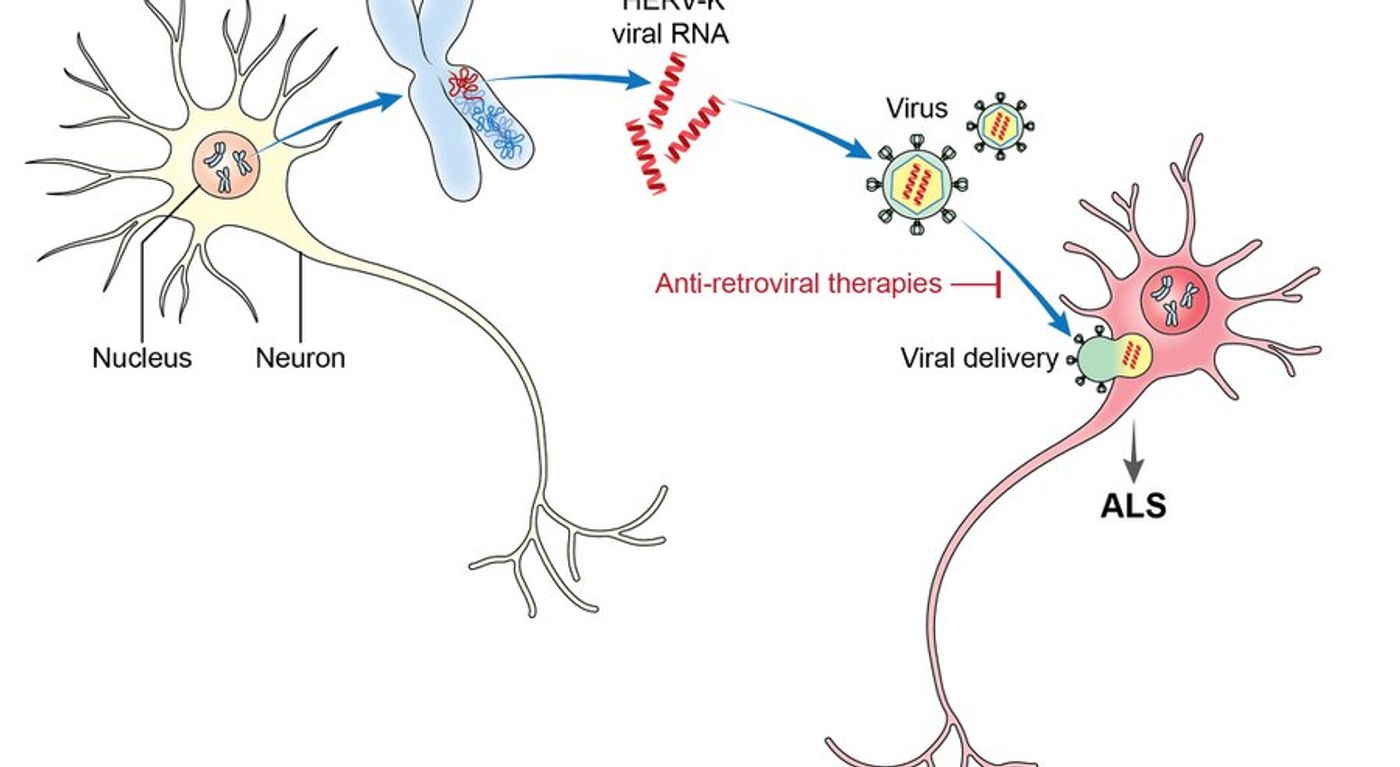Most people don’t realize that the genetic remnants of viruses from millions of years ago still reside in human DNA. While most of these viruses are just dormant fossils of former germs and diseases, new research indicates that some of them can still act up.
Researchers at the National Institutes of Health found that if these old genetic dinosaurs get reactivated in the human genome, they can cause devastating destruction of neurons, much like the kind of damage that is seen in certain types of amyotrophic lateral sclerosis, or ALS.
The study results were published in the journal Science Translational Medicine and a link between what are known as HERVs, or human endogenous retroviral genes and ALS was found. In addition, given the results that point to these viral genes, scientists now what to know if anti-viral drugs, similar to those patients suffering from HIV are given to suppress the AIDS virus, might be a treatment option for patients dealing with ALS.
The genetic leftovers of these infections have been passed along in human evolution for millions of years.
Experts tell us that approximately 8% of our human DNA is made up of these ancient genetic ancestors. Avindra Nath, M.D., clinical director at the NIH's National Institute of Neurological Disorders and Stroke (NINDS) was a senior author on the recent study and said
in a press release, "People call the genes for these viruses junk DNA. Our results suggest they may become activated during ALS. Ultimately we hope the results will lead to effective treatments for a heartbreaking disorder."
ALS is a disease that devastates its victims. It is always fatal, taking lives by destroying the neurons that control movements. The disease can start with simple difficulty walking or speaking and progress to an inability to breathe. No treatment exists for the disease. Dr. Nath’s team noted that in some cases patients with AIDS developed neurological symptoms similar to those found in ALS and some of these symptoms were reversed by using heavy doses of anti-viral drugs. Dr. Nath was involved in
previous research that found reverse transcriptase, a protein encoded by retroviral genes, in the blood of some ALS patients. That research along with the team’s knowledge of the neurological symptoms in some HIV infected patients to explore the link between the retroviruses and ALS. They did not expect to find that the retroviruses believed to be involved in ALS were endogenous, that is, passed down from generation to generation
The study began by showing brain samples from ALS patients. In those samples were higher than normal levels of messenger RNA that were encoded by the HERV-K. These levels were not seen in healthy patients brain samples, nor were they seen in patients with Alzhiemer’s disease.
Researchers also found higher rates of early death in genetically altered mice where the HERV-K gene was activated. When the mice were autopsied, the team found that their brains, muscles and spinal cords were damaged, but the damage was limited to motor neurons, which control movement, exactly as happens in human patients with ALS.
The team is now looking at a gene regulating protein, TDP-43 as a possible treatment for ALS as it was shown in the study to affect HERV-K activity. Dr. Nath stated, "We may have discovered a precision medicine solution for treating a neurodegenerative disorder." The video below explains more about this groundbreaking study.









